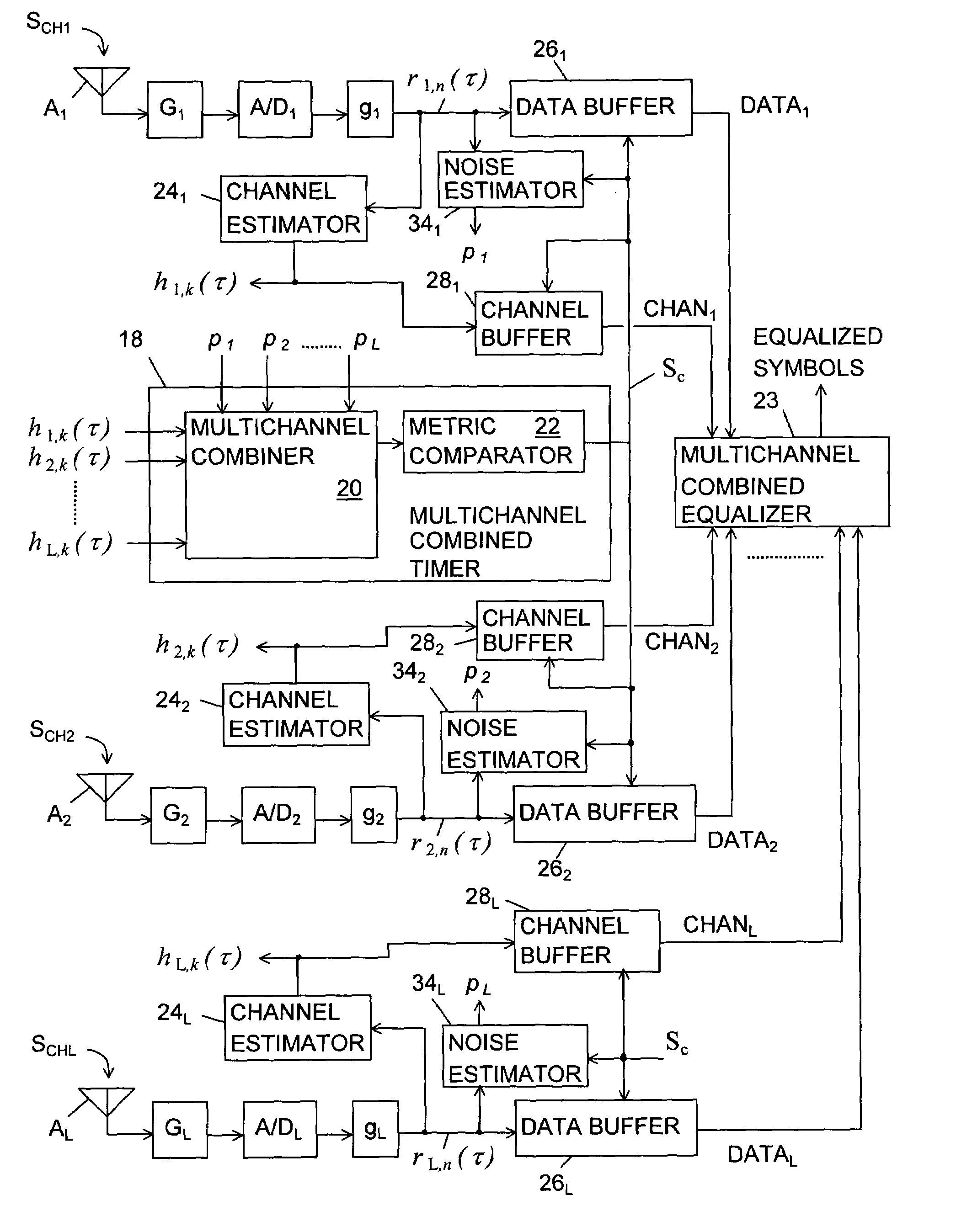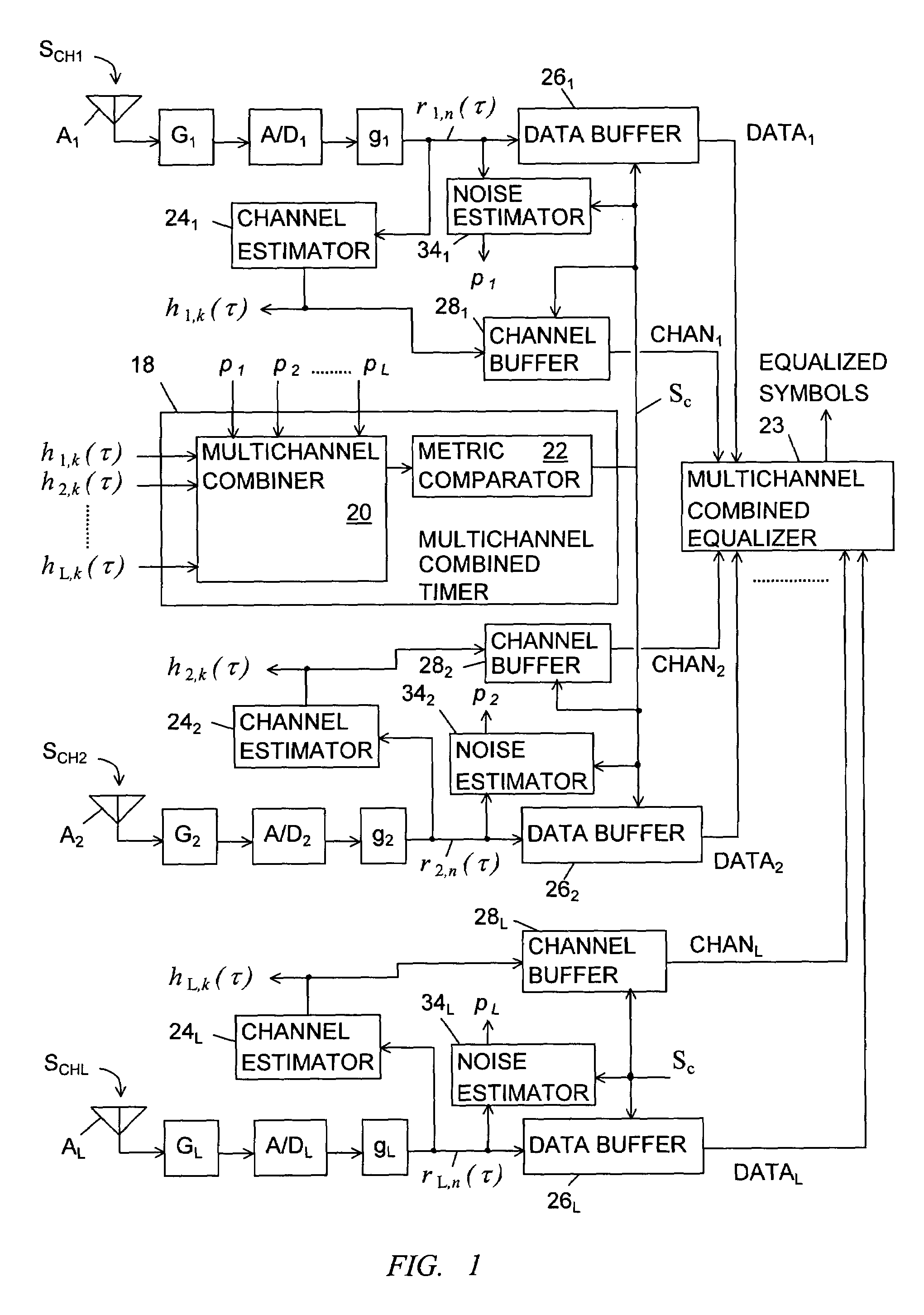Joint timing recovery for multiple signal channels
a signal channel and signal recovery technology, applied in multi-frequency code systems, polarisation/directional diversity, amplitude demodulation, etc., can solve the problems of prohibitive complexity of mlse equalizers, increase in the number of trellis states of mlse equalizers, and increase in the complexity of dfe and ddfse equalizers, so as to reduce the complexity of equalization
- Summary
- Abstract
- Description
- Claims
- Application Information
AI Technical Summary
Benefits of technology
Problems solved by technology
Method used
Image
Examples
Embodiment Construction
[0021]FIG. 1 is a block diagram of a multichannel signal receiver of the present invention referred to by the general reference number 10. The receiver 10 includes two or more receiver chains 1, 2 through L. As described herein, structural elements of the receiver chains 1, 2 through L are referenced with subscripts “1”, “2” through “L”, respectively. It should be noted that the present invention can be used with any number of channels and receiver chains equal to or greater than two.
[0022]The receiver chains 1, 2 through L include antennas A1, A2 through AL, respectively, having different spatial positions (spatial diversity). Referring to FIG. 2, a transmitter 12 transmits a wireless transmitted signal that passes through channels CH1, CH2 through CHL to be received as wireless channel signals SCH1, SCH2 through SCHL by the antennas A1, A2 through AL, respectively. In general, each of the channel signals SCH1, SCH2 through SCHL is composed of several signals traveling different ge...
PUM
 Login to View More
Login to View More Abstract
Description
Claims
Application Information
 Login to View More
Login to View More - R&D
- Intellectual Property
- Life Sciences
- Materials
- Tech Scout
- Unparalleled Data Quality
- Higher Quality Content
- 60% Fewer Hallucinations
Browse by: Latest US Patents, China's latest patents, Technical Efficacy Thesaurus, Application Domain, Technology Topic, Popular Technical Reports.
© 2025 PatSnap. All rights reserved.Legal|Privacy policy|Modern Slavery Act Transparency Statement|Sitemap|About US| Contact US: help@patsnap.com



